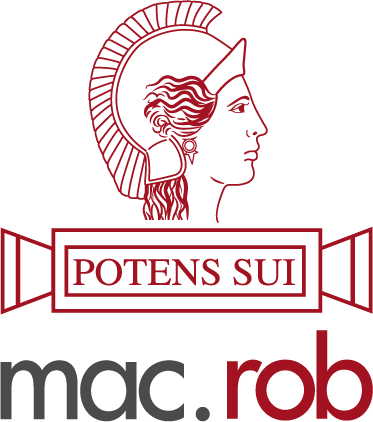Japanese Language Studies | Student Reflections
Students of Mac.Rob’s Japanese Language Studies reflect on the various traditional cultural activities they explored in Term 4, 2022, including calligraphy, flower arranging, and a tea ceremony.
書道(しょどう) | Shodo) | Calligraphy
During class, our teacher - Mori sensei - gave my class the wonderful opportunity to do calligraphy. Everyone was careful to bring a spare shirt to wear over our uniform, so we wouldn’t get it dirty. We were each given brushes, special paper, ink and inkstone. The paper was interesting, as it had both a rough side and a smooth side. It was completely up to the calligrapher which side they wanted to use - there was no ‘wrong’ side. The inkstone was an unfamiliar tool, being rectangular in shape. We used it to contain the ink and to dip our brushes in. The inkstone also helped us control how much ink was on our brush, so we didn’t waste any. It was an exciting experience, with everyone beginning by practising the Japanese word for swimming ‘泳’. We learned the correct way to move our hands and wrists so as to carry the essence of the word, in addition to the certain ways each stroke could be applied to give the pieces more feeling. Brainstorming words to write and how to best express them and working with real ink for the first time was amazing. Personally, I wrote the words 火 (fire) and 読者の夢 (a reader’s dream). It was a great bonding activity for the class; we were able to test our Japanese knowledge in a fun way.
Meha M, 9J
生け花 | Ikebana | Flower Arrangement
In one of our last classes of the year, we were able to research and recreate the Japanese art of flower arrangements—ikebana. It was something we were all looking forward to, and overall really enjoyed learning about.
We first learnt about the basics of ikebana, how the flowers were arranged and why they were arranged that way. In most variations, there were three main parts to an arrangement: heaven (shin), earth (soe), and mankind (tai), represented by different branches, flowers, and leaves bent at certain angles and heights. We also learnt about the different materials needed, such as the kenzan (a plate of pins used for arranging flowers) and different vases, each used in different styles of ikebana.
Once we had researched through the theory and ideology behind it, we began to actually arrange flowers. Even though there were guidelines mentioned above, we were encouraged to be creative and express ourselves through the ikebana. We got to choose between white and purple chrysanthemums, and various leaves, placing them on the kenzan to represent shin/soe/tai in any way we wanted.
Learning more about Japanese culture and participating in the art of ikebana was very enjoyable, and I’m glad we were given the opportunity to do this!
Jana S, 10J
茶道 | Chado | Japanese Tea Ceremony
The tea ceremony is a tradition that is ingrained in Japanese culture. The purpose of the tea ceremony, chado, transcends just the physical serving and receiving of tea. The tea ceremony is to convey hospitality and respect for guests. It also offers a break from the fast pace of regular life, and it allows you to sit back and enjoy a simple cup of tea and forget all your aches and troubles. The philosophy, culture and significance of the tea ceremony are unique to Japanese culture. Our class was extremely excited to try our hand at it.
On the 25th November, 10LJP03 participated in the cultural significance of the tea ceremony. After a demonstration from Mori Sensei, we took turns using the chashaku (tea scoop) to scoop the green tea into the chawan (tea bowl). Using the chasen (tea whisk), we whisked the tea with hot water and poured the tea into cups to serve to the guests. The guests — our classmates — were seated, shoeless, on tatami mats. The tea was accompanied by sweet potato and brown sugar yokan (jelly), as it is customary to serve sweets during the tea ceremony.
This taste of Japanese culture was an amazing experience for everyone involved. Not only did we get to try Japanese sweets and sip some refreshing green tea, but we learned the value of hospitality, patience and relaxation; virtues that the tea ceremony’s foundations are built upon. Amidst a busy day of tests, responsibilities and meetings, the chado was a way for us to rewind and participate in an age-old tradition with our classmates and friends.
Harshitha M, 10A







